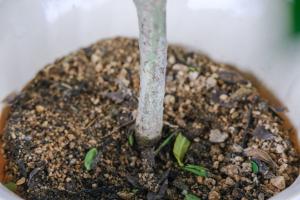How to Open a Water Purifier Plant
Opening a water purifier plant is an excellent business opportunity for those who want to contribute to the community by providing clean drinking water. However, launching a water purification plant from scratch can be challenging. Here are some steps to guide you on how to open a water purifier plant.
Step 1 – Conduct Market Research
Before you dive into opening a water purifier plant, it is essential to conduct market research. In-depth market research will help you to identify the target audience, understand competition, and determine the demand for water in your target location. With this information, you will be able to tailor your plant to meet your customers’ needs and maximize your profits.
Step 2 – Develop a Business Plan
A solid business plan is necessary for any successful business. When creating a business plan for a water purifier plant, you need to consider the type of water purification technology you will use, the required equipment, the quantity of water you will purify, and the cost of the process. Consider all these factors as well as the financing, marketing and management strategies of the business.
Step 3 – Choose the Right Location
Choosing the right location plays a critical role in the success of your water purifier plant. You need to consider factors such as the distance from the water source, ease of accessibility, and proximity to your target market. It is crucial to have the necessary permissions from local bodies before setting up the plant. It is also important to check if the location has adequate water supply and if it’s suitable for the water purification process.
Step 4 – Select the Appropriate Water Purification System
The water purification method you select will determine the quality of your water output. There are various methods of water purification, such as Reverse Osmosis (RO), Ultrafiltration (UF), and Ultraviolet (UV) purification. You need to consider factors like the type of contaminants you want to remove from water, the standard of water required by the customers and the cost of the system.
Step 5 – Purchase and set up necessary equipment
Besides the water purification system, other essential equipment is necessary for a water purifier plant, such as storage tanks, pipelines, and pumps. Apart from the primary equipment, auxiliary equipment such as generators, compressors, and control panels should also be purchased. The setup of equipment should be carried out according to the specifications given by the provider.
Step 6 – Obtain necessary permits and licenses
After setting up the plant, you must obtain all the necessary permits and licenses from the authorities to operate legally. These permits and licenses may vary depending on your location, and they are essential to avoid any legal problems that may arise in the future.
Step 7 – Hire skilled staff and start operations
Hiring skilled staff is vital for the efficient functioning of the plant. A team must be chosen with the relevant qualifications and previous experience in water purification. Once the staff is trained to operate the equipment and follow the safety standards, you can start your plant’s operations.
Conclusion
Opening a water purifier plant is an investment that requires thorough research and proper planning. Careful consideration of the above factors is essential to ensure the successful launch and operation of the water purifier plant. With the right knowledge, you can start a business in water purification and provide access to safe drinking water for the community.

 how many times do yo...
how many times do yo... how many planted tre...
how many planted tre... how many pine trees ...
how many pine trees ... how many pecan trees...
how many pecan trees... how many plants comp...
how many plants comp... how many plants can ...
how many plants can ... how many plants and ...
how many plants and ... how many pepper plan...
how many pepper plan...






























